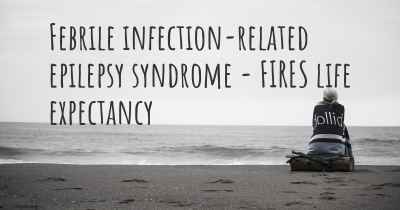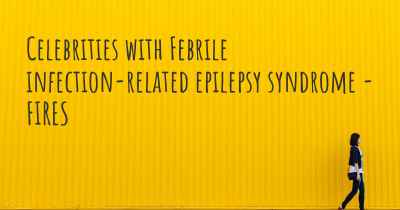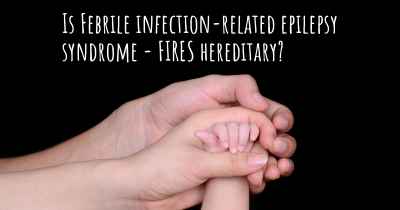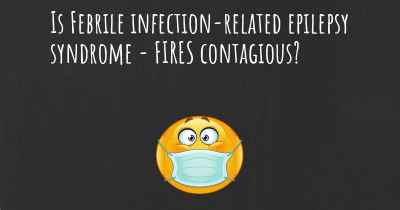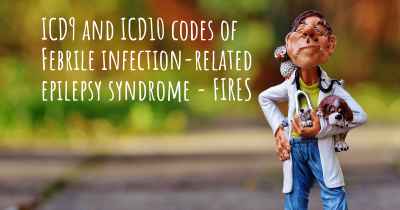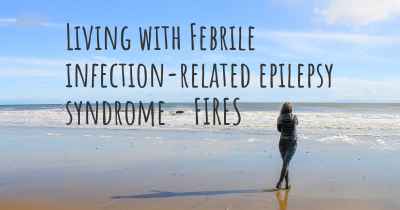How is Febrile infection-related epilepsy syndrome - FIRES diagnosed?
See how Febrile infection-related epilepsy syndrome - FIRES is diagnosed. Which specialists are essential to meet, what tests are needed and other useful information for the diagnosis of Febrile infection-related epilepsy syndrome - FIRES
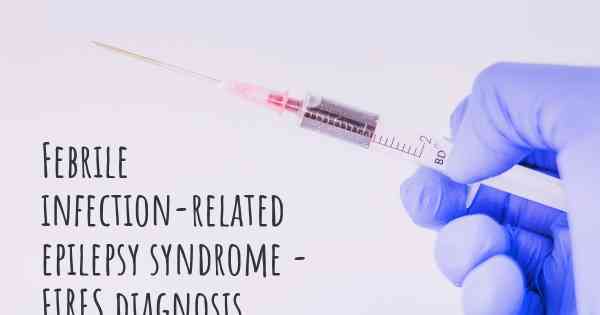
Febrile infection-related epilepsy syndrome (FIRES) is a rare and severe form of epilepsy that typically affects previously healthy children and young adults. It is characterized by the sudden onset of prolonged seizures following a febrile illness, such as an infection. The diagnosis of FIRES involves a comprehensive evaluation that includes clinical assessment, medical history, laboratory tests, and neuroimaging studies.
Clinical Assessment
The first step in diagnosing FIRES is a thorough clinical assessment by a healthcare professional. The doctor will review the patient's medical history, including any previous febrile illnesses or seizures. They will also conduct a physical examination to check for any neurological abnormalities. The presence of prolonged seizures following a febrile illness is a key characteristic of FIRES.
Electroencephalogram (EEG)
An electroencephalogram (EEG) is a crucial diagnostic tool for FIRES. It measures the electrical activity of the brain and can help identify abnormal patterns associated with epilepsy. In FIRES, the EEG often shows a specific pattern called "burst suppression," which is characterized by bursts of electrical activity followed by periods of silence. This pattern is indicative of severe brain dysfunction.
Laboratory Tests
Laboratory tests are performed to rule out other potential causes of seizures and to assess the patient's overall health. Blood tests may be conducted to check for infections, metabolic disorders, autoimmune conditions, and genetic abnormalities. Lumbar puncture (spinal tap) may be performed to analyze cerebrospinal fluid for signs of infection or inflammation.
Neuroimaging Studies
Neuroimaging studies, such as magnetic resonance imaging (MRI) or computed tomography (CT) scans, are often conducted to evaluate the structure and function of the brain. These imaging techniques can help identify any structural abnormalities or brain damage that may be contributing to the seizures. In some cases, positron emission tomography (PET) scans or single-photon emission computed tomography (SPECT) scans may be used to assess brain metabolism and blood flow.
Exclusion of Other Conditions
It is important to exclude other conditions that may present with similar symptoms to FIRES. These may include autoimmune encephalitis, mitochondrial disorders, or other forms of epilepsy. The diagnostic process involves ruling out these alternative diagnoses through a combination of clinical evaluation, laboratory tests, and neuroimaging studies.
Duration of Seizures
The duration of seizures is a critical factor in diagnosing FIRES. Typically, FIRES is characterized by prolonged seizures that last for several days or even weeks. These seizures are often resistant to standard antiepileptic medications, making them difficult to control. The persistence of seizures despite appropriate treatment is a hallmark feature of FIRES.
Collaboration with Specialists
Diagnosing and managing FIRES often requires a multidisciplinary approach involving various specialists, including neurologists, epileptologists, infectious disease specialists, and intensivists. Collaboration among these experts is crucial to ensure accurate diagnosis, appropriate treatment, and ongoing care for individuals with FIRES.
Conclusion
Diagnosing FIRES involves a comprehensive evaluation that includes clinical assessment, medical history, laboratory tests, and neuroimaging studies. The presence of prolonged seizures following a febrile illness, along with characteristic EEG patterns, helps differentiate FIRES from other conditions. Collaboration among specialists is essential for accurate diagnosis and management of this rare and severe form of epilepsy.
Posted Sep 19, 2017 by Ramses Ricardo 2000
Posted Jun 20, 2022 by Carla 4020
